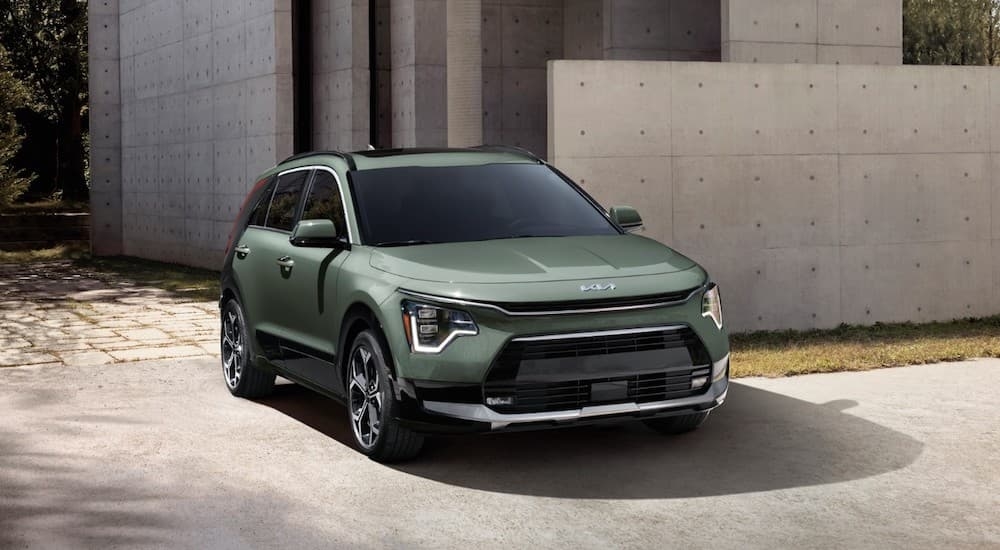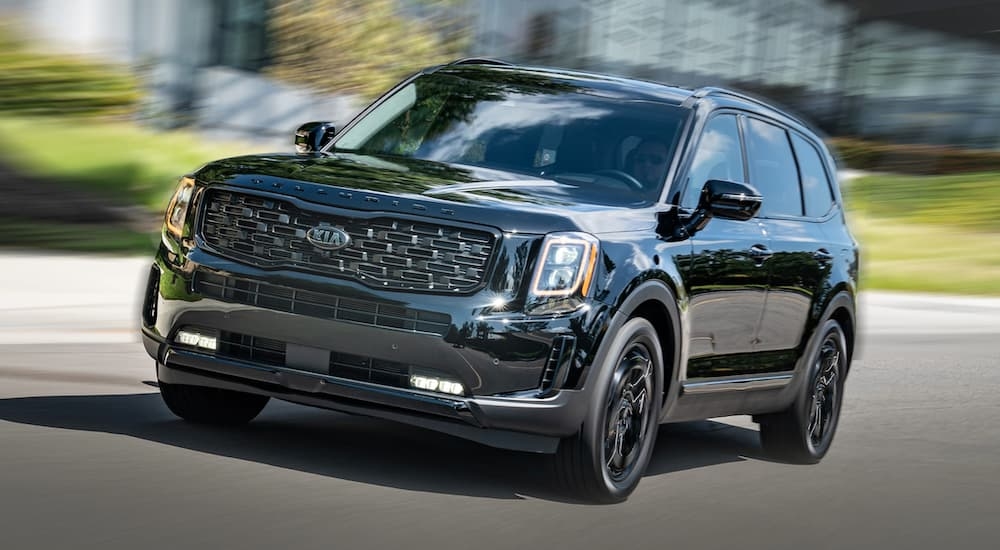Sport utility vehicles (SUVs) are popular among drivers who want more comfort and space than one can get from a coupe or sedan while still being versatile enough to serve different lifestyles based on the driver's preference. However, several body sizes have emerged within the SUV segment over the years. When you think of an SUV, you might immediately picture a sturdy, boat-like vehicle like a Cadillac Escalade or a GMC Yukon, but there’s a lot more to SUVs than massive body frames and three rows of seating. As the market develops, manufacturers find new ways to cram tremendous value in SUVs of all shapes and sizes, only if you know what you're looking for and where to find them. Are you shopping for used cars in Victoria and trying to decide which SUV is best for your needs? As your trusted dealer in Victoria, we'd like to offer a quick rundown of the most commonly recognized types of SUVs and the unique advantages they lend to a savvy driver. Let's get started!
Subcompact
A subcompact SUV is the smallest type of SUV. If you’ve ever seen a small, boxy vehicle on the road with the dimensions of an SUV but the overall size of a coupe or sedan, that was likely a subcompact SUV. Subcompacts offer some of the best parts of an SUV––generous space, fuel efficiency, and versatility––while retaining the same sleek, maneuverable platform as a car, getting you the best of both worlds.
Being some of the smallest SUVs, subcompacts typically seat up to five people. However, what you lose in interior space you make up for in fuel economy. Subcompact SUVs can be some of the most fuel-efficient vehicles on the market, with average EPA-estimated ratings rivaling sedans or coupes despite their greater overall cargo space.
Who Should Drive It?
A subcompact SUV is terrific for anyone entering the SUV space for the first time. If you’ve only driven cars your entire life, jumping right into a large, three-row SUV can be a bit of an adjustment, as you might find it challenging to maneuver the vehicle around dense urban environments or hazardous weather. The beauty of the subcompact is that there’s little to no learning curve in handling it for previous car drivers: models like the Kia Seltos or Kia Soul are designed to offer that signature SUV reliability without compromising the smooth handling of a good car.
Compact
A compact SUV is a step up from the subcompact in size, designed with five seats but offering more rear passenger room and larger cargo space than the average subcompact. Still, compact SUVs remain small enough in dimensions that they typically boast excellent fuel economy, losing just a few MPGs compared to a subcompact SUV on average. Particularly notable for those who live in areas with disastrous winters, all-wheel drive (AWD) is more common in compacts than subcompacts.
Another advantage the average commuter likely doesn't consider is that compact SUVs don't slouch in the towing department, as you can expect towing capacities ranging from 1,000 to 3,000 lbs for a compact SUV. For example, the Chevy Equinox has a towing capacity of 1,500 lbs. In comparison, the Kia Sportage has a capacity between 2,000 to 2,500 lbs, depending on the powertrain.
Who Should Drive It?
A compact SUV is ideal for anyone who needs seating for up to five passengers but wants to make sure those passengers are comfortable on long drives. If you want a slightly elevated drive height than what you’d get in a subcompact, consider a compact SUV. Compact SUVs are also the smart choice for drivers who need a practical, fuel-efficient vehicle for commuting and parking in the city but can do some towing in a pinch for those weekend excursions.
Midsize
A midsize SUV is the largest of the five-seater SUVs, featuring greater rear-seat passenger room and cargo space than a compact SUV. When it comes to the midsize, this is where we start to consider powertrains and engines, even in an SUV. While in the subcompact and compact range, you see many I-3 and I-4 engines, in the midsize category, you’ll start to see V6 engines show up as additional options for those looking for a little kick to their SUV. Towing abilities are also more of a mainstay in this category, with midsize SUVs typically boasting towing abilities from 3,000 lbs to 5,000 lbs.
Who Should Drive It?
If you know you'll be using all five SUV seats regularly and for many long trips, you might consider a midsize SUV for the long haul. Rear-seat passengers typically want as spacious seating as possible for multi-hour drives. If you're going on lengthy trips, that means that everyone has a lot of belongings to bring, and midsize SUVs boast the best interior cargo space in the five-seat category before you start moving up to the three-rows. You’ll need the larger trunk space if you see yourself going on long road trips with a big family.
Three-Row
As its name promises, a three-row SUV has three rows of seating, with varying available seats. On average, you can find seating for six to eight passengers in a three-row SUV, split between bench seats, captain's chairs, foldable seats, and other factors depending on the model. The Kia Sorento and Telluride, for example, offer seating for up to seven/eight passengers, either with split-folding second-row bench seats or second-row captain's chairs (a more luxurious type of passenger seat) for added comfort, depending on the trim level. As you can imagine, three-row SUVs are hefty and powerful, boasting far stronger engines than the midsize segment, and can tow anywhere in the 5,000 to 5,500 lbs range, depending on your choice of powertrain. As mentioned with captain's chairs, three-row SUVs are among the more luxurious models out of the types we've discussed so far, with models like the Cadillac Escalade designed to enhance the experience for everyone in the cabin.
Who Should Drive It?
If your passenger needs vary daily but need at least six seats, check out a three-row SUV. It’s a good choice for those who sometimes need to load up seven or eight passengers but don’t necessarily do so every day or for particularly long drives, acting as a nice "intermediate" between the midsize SUV and the illustrious full-size.
Full-Size
Full-size SUVs encompass the largest SUVs available on the market. If you're looking for anything larger than these, you're looking for a full-size van. Full-size SUVs usually have seating for seven or eight passengers and some extended models, like the GMC Yukon XL, even have seating for nine. Naturally, the third row will be more spacious than a three-row SUV, matching the spaciousness of the second row on a midsize. In fact, full-size SUVs are known for offering generous seating space for all three rows. Trunks will also be larger than those of three-row SUVs, boasting the largest interior cargo space in the market. Full-size SUVs tend to sit on truck-like platforms, so if you get one, be ready to handle a lot of steel. Regarding power, full-size SUVs sit in the realm of V8 engines, and average towing capacities range from 8,000 to 9,000 lbs.
Who Should Drive It?
If nothing we've discussed in this article is large enough for you, then committing to a full-size SUV is the way to go. If you have a large family, regularly transport co-workers for your business, or have to drive at least seven people around daily, a good full-size SUV will accommodate those needs at a reasonable price. Even if you only need seating for seven but take long trips with lots of cargo to transport, you’re probably still best off with this SUV size. Naturally, if you don't want to commit to a pickup truck, a full-size SUV is also a good choice for those looking to tow boats or decent-sized campers with them on their trip.
Find Your Used SUV at Victory Kia
If you’ve decided which SUV size fits your needs, all that's left to do is to find the best model and trim in that size, and we'd love to help! We have a huge inventory of pre-owned models from Kia and all the names you trust, like Ford, Chevy, GMC, and Jeep. Whether you want a subcompact, compact, midsize, three-row, or full-size SUV, we have every size on our lot here in Victoria, so come visit us today at Victory Kia!


